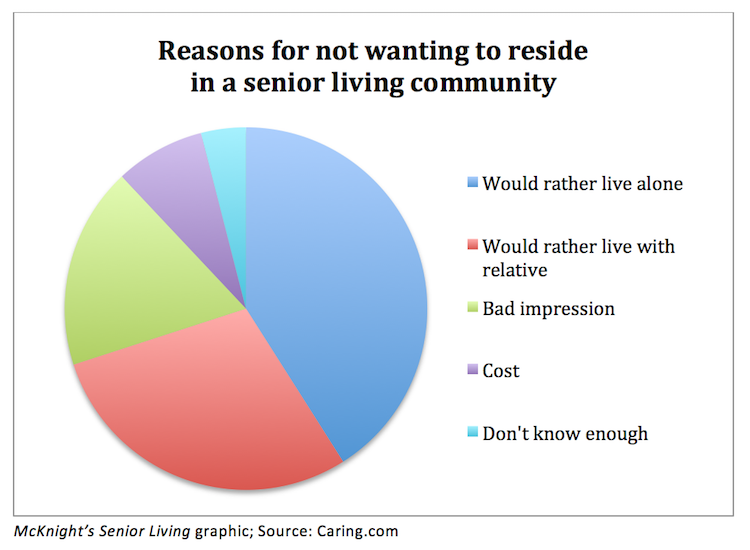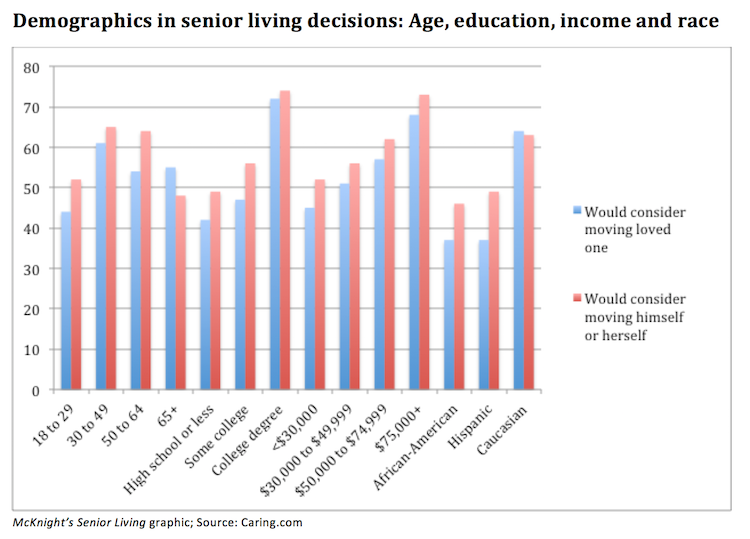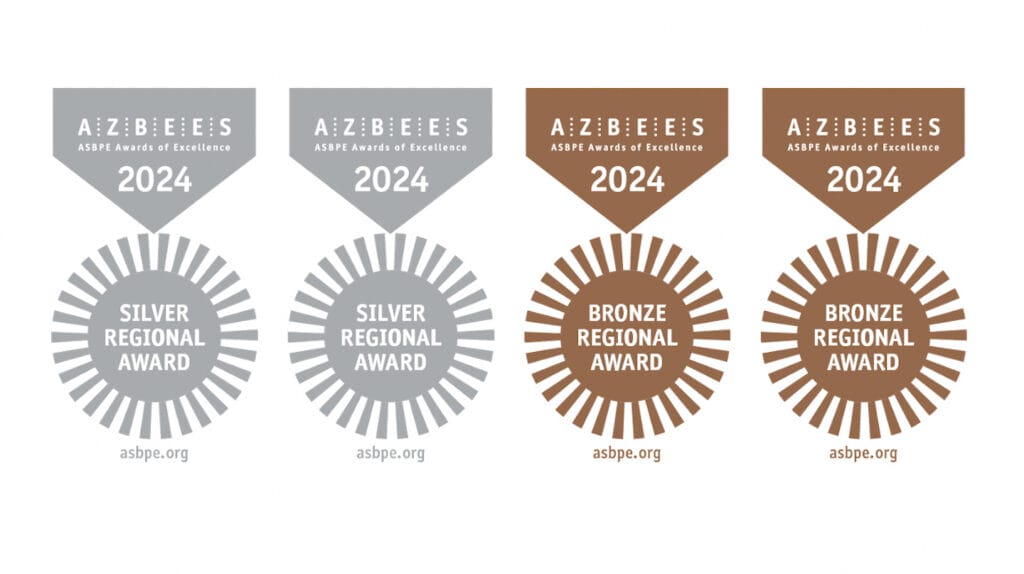
A new survey offers insights into the reasons that some people choose not to “place” a loved one in a senior living community, or live in one themselves, as well as potential good news related to future prospects.
Website Caring.com commissioned Princeton Survey Research Associates International to interview a nationally representative sample of 1,002 adults living in the continental United States. Princeton Data Source conducted the interviews in February by landline and cell phone in English and Spanish. Results were released March 21.
 Overall, the most common reason survey-takers gave for not wanting to live in an independent or assisted living community was that they would rather live on their own (41%) or with a family member (29%). Some (18%) said they had a “bad impression” of senior living, but just 8% said that senior living communities are too expensive. Four percent said they didn’t know enough about senior living communities.
Overall, the most common reason survey-takers gave for not wanting to live in an independent or assisted living community was that they would rather live on their own (41%) or with a family member (29%). Some (18%) said they had a “bad impression” of senior living, but just 8% said that senior living communities are too expensive. Four percent said they didn’t know enough about senior living communities.
An examination of findings based on age, education level, income and race reveals that all respondents were more likely to say they would consider a senior living community for themselves in the future rather than for a parent or parent-in-law, except for a 1% difference among Caucasians and a 7% difference among those aged at least 65 years. Sixty-four percent of Caucasians said they would consider moving a parent or parent-in-law to a senior living community, and 63% said they would consider such a move for themselves. Fifty-five percent of those aged at least 65 said they would consider a move to senior living for a loved one, compared with 48% for themselves. (See chart, below.)
Looking at results by age, those aged 30 to 49 were most likely to say they would consider senior living for a loved one, with 61% saying so, and those aged 18 to 29 were the least likely to consider it, with 44% saying they would. When asked whether they would consider senior living for themselves in the future, those aged 30 to 49 and 50 to 64 were most likely to say they would, at 65% and 64%, respectively. By contrast, 52% of those aged 18 to 29 said they would consider senior living for themselves in the future, and the percentage was 48% for those aged 65 or more years.
Ann Fishman, a former member of the U.S. Senate Special Committee on Aging, told Caring.com that members of Generation X, who are aged about 36 to 51, are practical and, therefore, may perceive senior living communities as an obvious and, perhaps, necessary part of aging. Tim Blattel, CEO of Twin Oaks Senior Living in O’Fallon, MO, told the website that the generational disparities could be due, in part, to an increasing fear of change that can come with age. Or, said Andrea Doherty, a Massachusetts-based senior living expert, those in the oldest age group may hold negative stereotypes about senior living or be affected by a wish to leave an inheritance to their descendants.
Interest in senior living among survey participants, for a loved one or for themselves, increased with education level as well as income level.
Regarding race, 64% of interviewed Caucasians said they would consider moving a parent or parent-in-law into an independent or assisted living community, versus 37% of African-Americans and Hispanics. Forty-six percent of African-Americans and 49% of Hispanics said they would consider living in such a community for themselves, however. Caucasians felt about the same for themselves as they did for their parents.
“Most of today’s assisted living communities are really nice and nothing like the negative stereotypes of the past,” said Dayna Steele, Caring.com’s “chief caring expert” and author of “Surviving Alzheimer’s with Friends, Facebook and a Really Big Glass of Wine.” “As these places get more diverse, I think that will encourage even more Hispanics and African-Americans to move in.”




